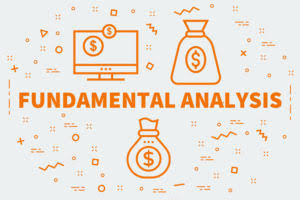
A vertical or common-size analysis is a financial tool analysts use to interpret financial documents like a profit and loss statement. The method calculates major line items (gross profit, operating profit, and net profit) from your income statement as a percentage of its base line item (gross revenue). It is important to compare income statements to identify changes in revenues, operating costs, and net earnings over time. For instance, a profit and loss report does not include what? your company’s revenues might be growing steadily, but your expenses might be growing at a much faster rate than your revenue. The goal is to get familiar with the finances of your business, using tools of analysis to determine the overall financial health of your company. If your P&L is positive, then it means you are making money, but if your gross profit is low or in the negative, then you may need to reassess your business model.

Income statement – Medium-sized and enterprise level businesses mostly use these. This is a commonly used term when reporting financials to investors, stakeholders, banks, owners, board of directors, and auditors. GAAP outlines options for either single-step or multi-step P&L statements. That could mean cutting down your OPEX (operating expenses), downsizing departments, or switching raw materials manufacturers to reduce your COGS (cost of goods sold).
How to Read a P&L
From an accounting standpoint, revenues and expenses are listed on the P&L statement when they are incurred, not when the money flows in or out. One beneficial aspect of the P&L statement in particular is that it uses operating and nonoperating revenues and expenses, as defined by the Internal Revenue Service (IRS) and GAAP. It’s important to note that the trial balance is different from the balance sheet.
- Your company’s gross profit is what you make after subtracting the COGS from your revenue, but it does not include indirect income and expenses.
- It compares a company’s moments in time since seasonality and other factors can cause your fiscal quarters to fluctuate.
- While a P&L for a small business will likely look very different, this example can still offer useful information about how a successful company formats their statement.
- You can also incorporate formulas to track month-over-month, quarter-over-quarter or year-over-year changes.
- The balance sheet includes outstanding expenses, accrued income, and the value of the closing stock, whereas the trial balance does not.
- You need a profit and loss statement to make the most informed choices for your business strategy.
- Either way, the profit and loss statement lets you see exactly where your business stands in terms of profit, which in turn allows you to make better business decisions.
The balance sheet shows a company’s resources or assets, and it also shows how those assets are financed—whether through debt under liabilities or by issuing equity as shown in shareholder equity. The balance sheet provides both investors and creditors with a snapshot of how effectively a company’s management uses its resources. Just like the other financial statements, the balance sheet is used to conduct financial analysis and to calculate financial ratios.
What are the Different Methods of Preparing Profit and Loss Statements?
Abbreviated as “COGS,” this is the cost of producing the goods or services you sold to your customers during the reporting period. Here’s how you put one together, how to read it, and why profit and loss statements are important for running your business. Want to learn more about how calculating profit and loss can help you grow your business? Check out our piece on how to effectively manage your company’s profit and loss. The steps above show you how to create a simple, straightforward income statement. You won’t need any more data than what we’ve listed here to fill out the U.S.
A profit and loss statement is also called an income statement, a statement of profit, or a profit and loss report. Creating one is a standard way to compile historical data for your business to tell its financial story over time. Each monthly or quarterly reporting period, analyze the data vertically to see your business’s monetary resource allocation. Over time, you will also analyze the data horizontally in context with other profit and loss statements to help you to make informed financial decisions and forecasts. You can also use the same technique to understand other businesses’ finances.
Step 3: Subtract cost of goods sold from revenue to determine gross profit
The net gain or loss appears at the bottom of the report and is what’s known as the “bottom line” in accounting. The most critical disadvantage of this profit and loss account is that it cannot guarantee future success. Recording expenditures can help to limit operating costs to the lowest possible amount.

Seneste kommentarer